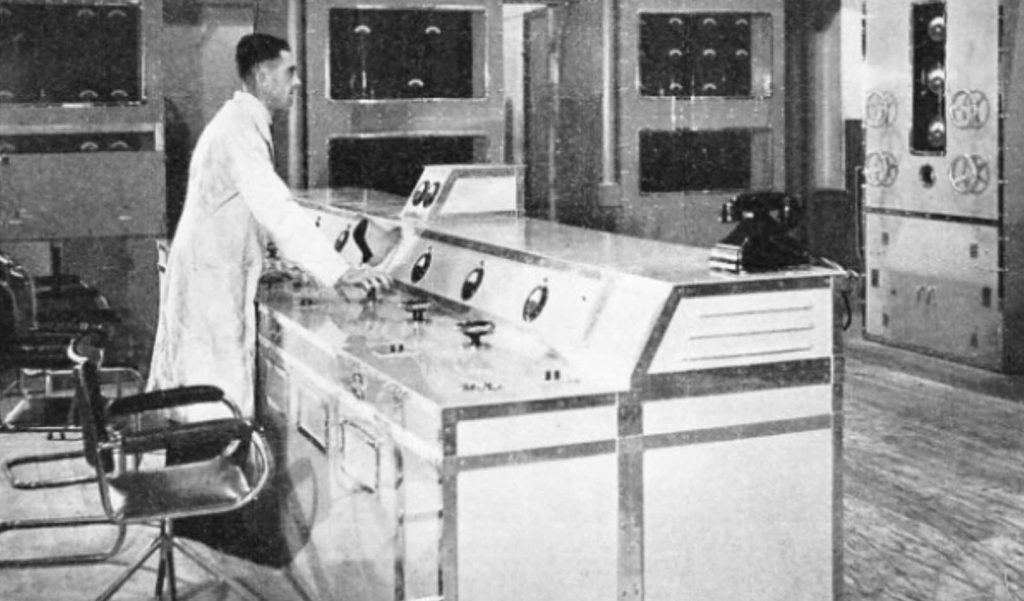OTD in early British television: 24 August 1936

The 250th ‘OTD in early British television’ post.
John Wyver writes: The Scotsman was among the newspapers that on the morning of Monday 24 August 1936 carried news of the previous day’s press preview of the BBC’s television operations at Alexandra Palace. Cecil Madden had hosted, with singer Rita Grant making a contribution, and the event was followed by a further encounter with the press on Tuesday, just ahead of the test tranmissions to Radiolympia that began on Wednesday 26.
In the absence of any actual programmes being ready for the press, the Scotsman correspondent focussed on the wonders of the technology:
One was immediately impressed by the solidly constructed machinery and apparatus, and the immense voltages used for the operation of the water-cooled valves. Two generators coupled together supply 10,000 volts for anode operation, another produces 5,000 volts for auxiliary anodes, and a smaller one supplies a mere 200 anodes for filament heating. It will be seen from these figures that the installations are on a grand scale.
Passing from the machinery hall into the studio of the Marconi-EMI system we saw a pianist under the glare of the stage lights, which approximate in intensity to those of normal theatre.
A wonderful new camera designed by British scientists and called the ‘Emitron’ camera, had its lens focussed on the scene to be transmitted. It is, however, a camera with a big difference, since it requires no reloading of plates or film… The camera can be worked indefinitely, as the sensitive plate is permanent.
From the studio we next visited the balcony where another Emitron camera swung to and fro on a pedestral scanning the slopes of the grounds below where people were lying about in the sunshine, and so into the adjoiniung room where two receivers operating cathode rays [sic] presented to us the scenes which were at that moment being picked up by the two television cameras…
From there we went to the Baird studios, where we shown equally wonderful cameras. In the Baird system the scene, whether close-up or outside, is recorded on a film in precisely the the same manner as in cinema film projection, but here again there is a great difference in the camera.
The film, on passing the lens, is fed into a developing tank, through which it takes ten seconds to pass, thence inot an adjoining tank of clear water, and then into a fixing tank, where the fixing is completed in ten seconds.
A final rinse in clean water and it passes before the scanning disc of the transmitter in the astonishingly short period of 30 seconds, so that for all intents and purposes it casn be called instantaneous tranmission.
The Baird system was operating with the ‘instantaneous film process’, licenced from a German company, and the delay was more like 54 seconds. It was clunky, unreliable, and with toxic chemicals sloshing about and high voltage wires, unquestionably dangerous. It would be abandoned in favour of the exclusive operation of the Emitrons at the end of January 1937.
Image: the control desk and amplifiers of the Baird transmitter, as shown in Wonders of World Engineering.
[OTD post no. 250; part of a long-running series leading up to the publication on 8 January 2026 of my book Magic Rays of Light: The Early Years of Television in Britain, which can now be pre-ordered from Bloomsbury here.]
Leave a Reply